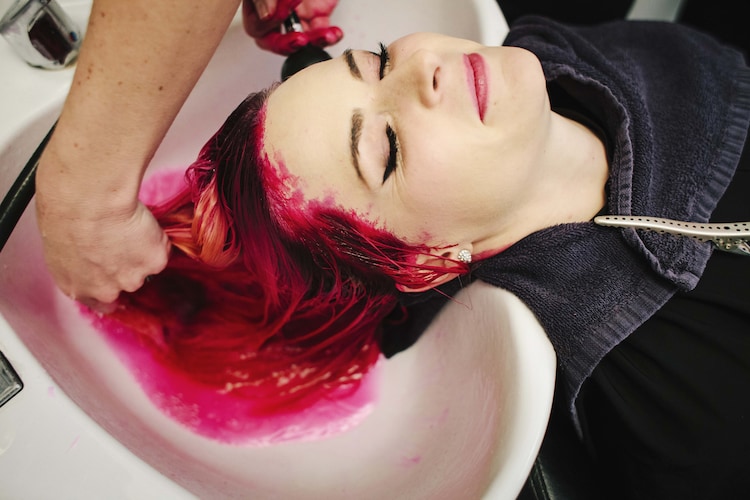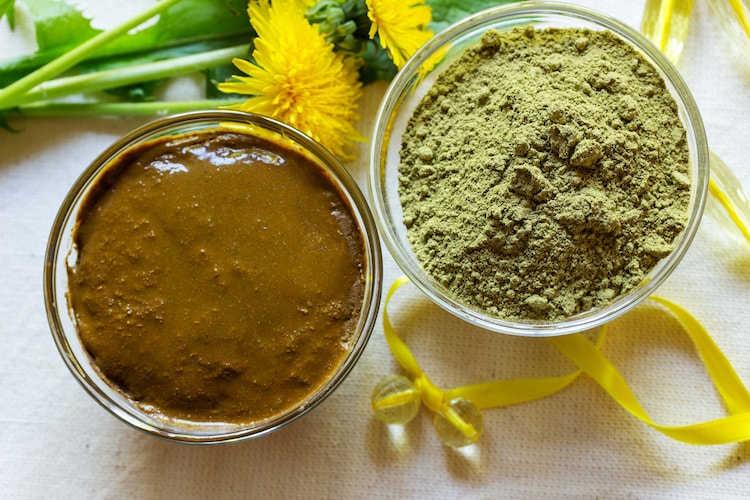How much hair color is too much hair color?
Are you thinking about booking another hair color appointment at the salon? Before you do, take a moment to think about where you need to draw the line for the sake of your hair’s health.
In short
- Hair color changes the structure of your hair
- It can weaken hair, especially if it contains harsh chemicals
- Take a break from dyeing if you notice excessive dryness, breakage, or loss of shine in your hair
Some do it for fun, and some to hide the signs of aging, but it’s hard to find someone who hasn’t tried or thought about coloring their hair.
And it’s no surprise that hair changes are often associated with new beginnings. There’s a certain truth to the saying ‘new hair, new me,’ and we’re all for it.
From subtle stripes to bold balayage or full global colour, we’ve experimented with different techniques to perfect our look.
But have you ever wondered how these hair coloring treatments affect the health of your hair, or when it’s time to stop using them?
What happens when you add a splash of color?
“Hair colour alters the structure of your hair, opening up the cuticles and depositing pigment inside,” explains Dr Ruby Sachdev, Consultant-Aesthetic Physician, Gleneagles Hospital, Bengaluru. india today,
Moreover, Dr. Shirin Furtado, Senior Consultant, Medical and Cosmetic Dermatology, Aster CMI Hospital, Bengaluru, says that the use of hair colour significantly changes the appearance and characteristics of hair.
“This can cause a variety of changes to the hair’s texture, shine, and overall appearance. When color is applied, it penetrates the hair shaft and causes a chemical reaction, altering the hair’s natural color,” she explains.
This process not only enhances visual appeal by bringing in new shades and tones, but can also affect hair health, making hair more porous or more susceptible to damage if not properly maintained.

Hair color can weaken hair, especially if it contains harsh chemicals, causing hair to become dry and break. Permanent hair dyes contain ammonia or ammonia substitutes, which help the color penetrate the hair shaft, but can also damage the cuticles and internal structure.
What are these harsh chemicals?
- Hair coloring products often use ammonia to open up the hair’s cuticles, allowing color to penetrate the hair better, but this can cause scalp irritation and respiratory problems.
- Another common ingredient is para-phenylenediamine (PPD), which can cause allergies.
- Another worrying chemical found in hair coloring products is resorcinol, which can disrupt hormonal balance.
- Formaldehyde, a known carcinogen, may be emitted during the hair coloring process.
But first, let’s talk about bleach
Dr. Furtado explains that it’s common for people to bleach their hair before applying color. Doing so helps lighten the hair’s natural color, creating a better base for the desired shade.
“Bleaching involves removing the natural color from your hair using strong oxidizers, such as hydrogen peroxide. While this allows for vibrant color application, it also removes the hair’s protective oils, leaving hair weak and more prone to breakage, split ends, and excessive dryness,” says Dr. Sachdev.
Hair color applied to bleached hair typically lasts longer because the hair is more porous, allowing the color to penetrate deeper.
- With bleach, the color can last for about 6-8 weeks, depending on the care and maintenance.
- Without bleach, the color typically fades more quickly, taking about 4-6 weeks for semi-permanent colors.
Additionally, hair color longevity can vary widely depending on a number of factors, including the type of dye used, natural hair texture, and post-application maintenance routine.
It is important to know about the damage that bleaching does to the hair structure. If not used correctly or with proper care, the chemicals involved can cause hair to become dry, brittle and break.

When to start and where to draw the line?
According to Dr Sachdev, there is no strict age limit for colouring hair, but it is advisable to wait until after adolescence, when the hair texture and scalp health become more stable.
Young individuals’ scalps may be more sensitive, so it is best to avoid harsh chemical treatments in their early years.
The doctor further explained that if the hair is dyed more than once every 4-6 weeks or bleached too often, it can damage the hair. It is advisable to take a break in between dyeing to keep the hair healthy.
“If you notice excessive dryness, breakage, or a loss of shine, it’s time to rethink your frequency,” she says.
On the other hand, Dr. Furtado says, “Determining the right amount of hair color can be subjective, as it depends on individual preferences, cultural norms, and personal style. However, it is important to consider factors such as the overall health of the hair, how often it is colored, and the potential for damage.”
She further adds, “You must find a balance between expressing your creativity through hair colour and keeping your hair healthy. It is important to assess when colouring starts damaging your hair or when it becomes too much work, and then reconsider your colouring methods.”
Let’s talk about recovery
By now, you must have realized that excessive hair coloring can lead to persistent dryness, split ends, scalp irritation, and even hair loss.
Not only this, but the harsh chemicals found in hair dyes, such as ammonia and peroxide, also strip out the natural oils from the hair, resulting in the hair structure being affected and the hair appearing dull.
Recovering from this type of damage typically requires a multi-faceted approach, including using deep conditioning treatments, minimizing exposure to chemicals, and adopting a gentle hair care routine.
Incorporating products containing nourishing oils and proteins can help restore moisture and strength to the hair, promoting healthy growth over time.
Are home remedies better?
Experts believe that traditional options like mehndi and shikakai offer some benefits over contemporary alternatives.
These natural ingredients have been used for centuries by various cultures for their unique properties, including promoting hair health, enhancing color, and providing nourishment without the harsh chemicals found in modern haircare products.
“The use of these older treatments may appeal to individuals seeking a more holistic approach to beauty, as they are often considered safer and more environmentally friendly,” says Dr. Furtado.
Meanwhile, Dr Sachdev says henna not only colours hair but also strengthens it. However, the colour in natural alternatives is more subtle and may not provide the same range of shades as synthetic colours.

Now, before you book your hair appointment
- Assess the current condition of your hair, as damaged or overly treated hair may not respond well to color treatments, causing more damage.
- It’s also a good idea to do a patch test to check for any allergic reactions to the dye, which can help prevent adverse effects.
- Consider the desired shade and how it matches your skin tone, as well as the maintenance required for that colour, as some shades may require frequent touch-ups.
- Be sure to choose ammonia-free or less damaging products, and opt for professional-grade dyes. After dyeing, use sulfate-free shampoos and conditioners regularly to maintain the health of your hair.
- Finally, consulting a professional stylist can provide you with useful information and personalized recommendations based on your hair type and preferences, which can ultimately improve the overall hair coloring experience.







